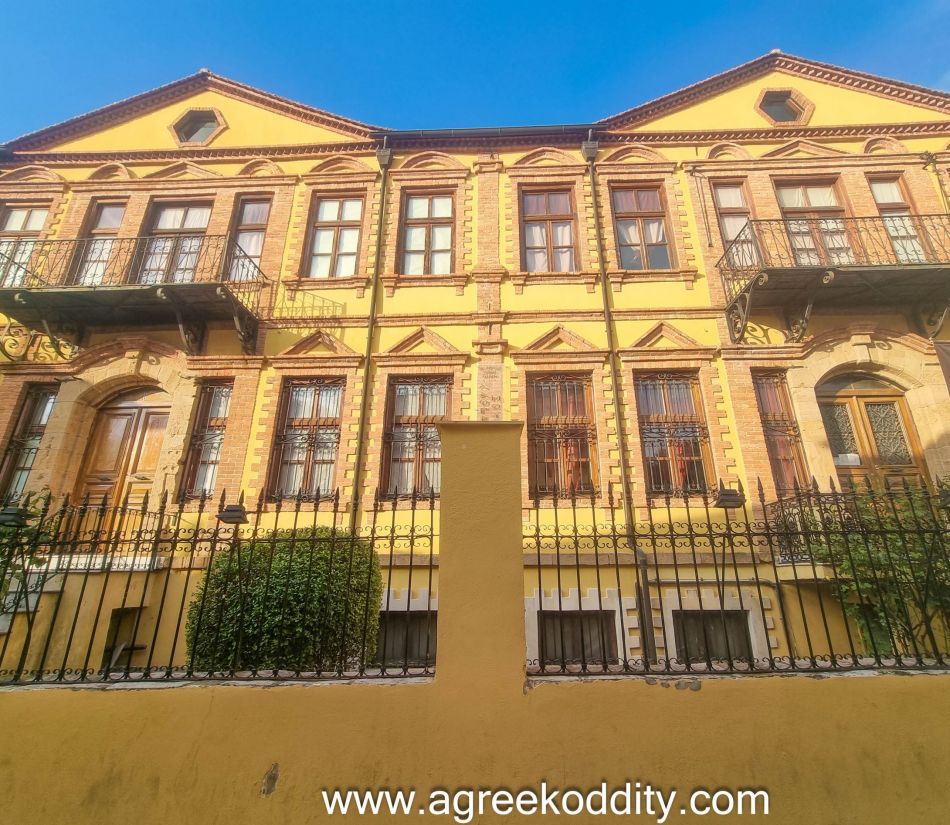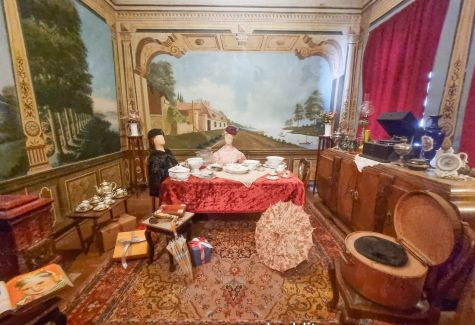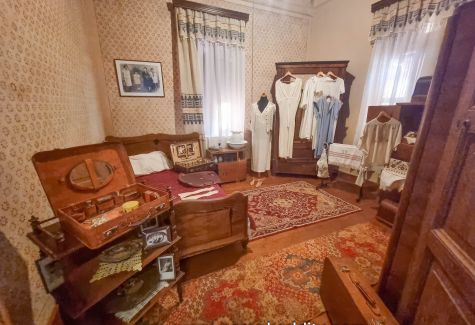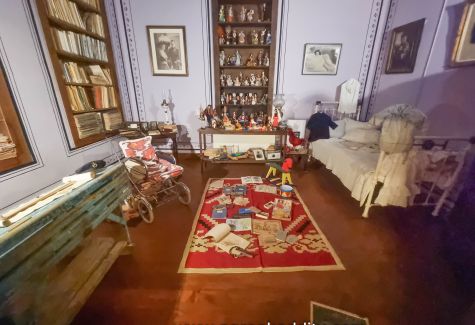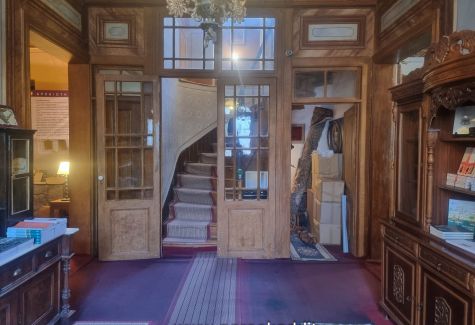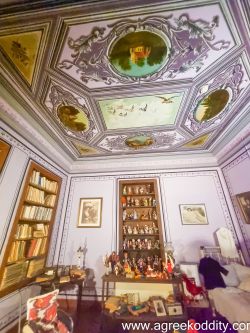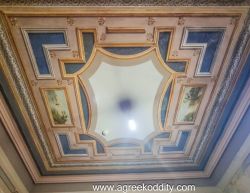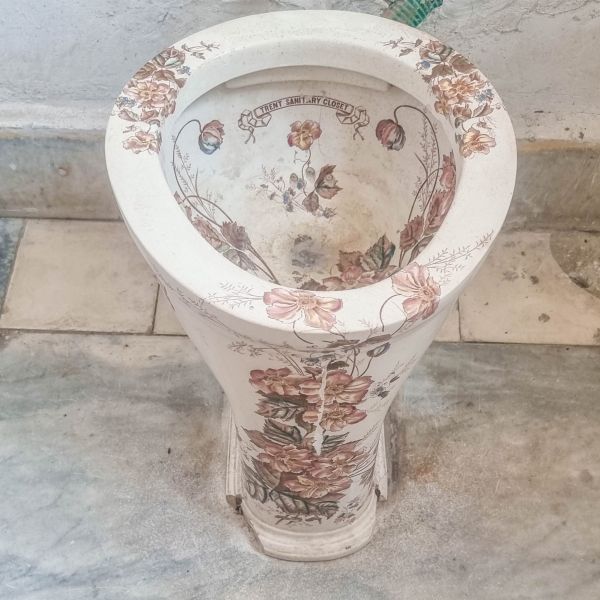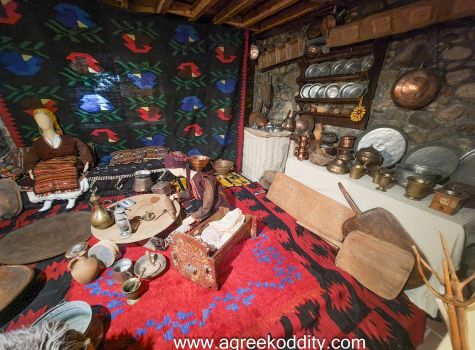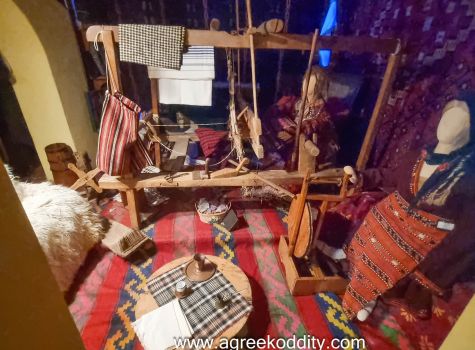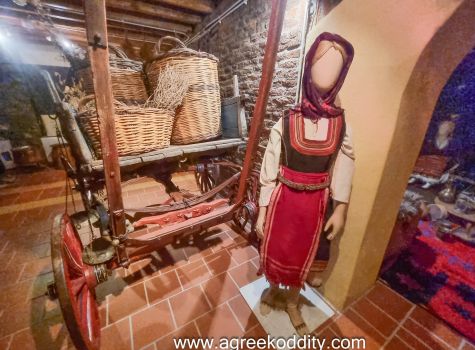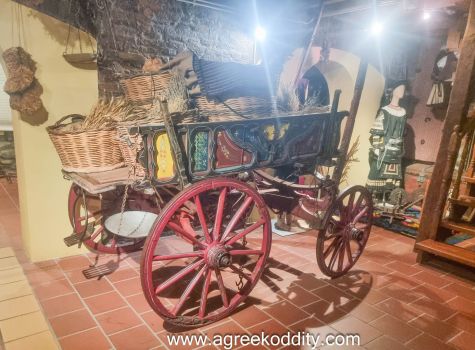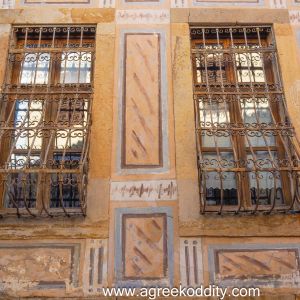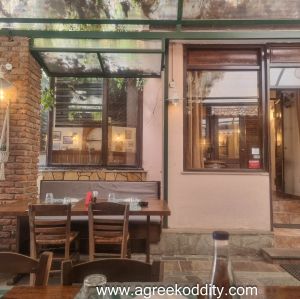Mansion Meanders in Xanthi
I am fast sailing past the halfway mark of my stay in Xanthi. I must admit that I have spent most of my time wandering around the old town admiring the architecture and the atmospheric alleyways. However, this morning I did attempt a trip to the nearby town of Komotini, the capital of the regional unit of Rhodope. I started the twenty-five-minute walk to the bus station where a bus was scheduled to leave at 11:00. Ten minutes in, thick, grey clouds rolled in over the mountain tops and deposited their wet contents onto the city – and me. I hadn’t set out prepared for rain so I headed back to the old town to explore some of the museums and old mansions open to the public.
The Old Town is like a living museum itself, but one of the most spectacular examples of architecture that you will see is the former mansion and now Folklore Museum in the heart of the town. Built by the Kougioumtzoglou family using architectural plans brought over from Russia in 1860, construction was completed in the early 1860s. They of course were merchants who’d made their wealth from the tobacco trade.
Before I enter the museum I can’t help but be transfixed by its magnificent facade. It’s Neoclassical in nature with Romanesque features however, the frontage is completely symmetrical. The ornate brickwork and balconies are very aesthetically pleasing. The the hexagonal skylights within the apex roof space are quite unique.
Stone steps on the right-hand side lead me to the main door. A helpful young man called John introduces himself to me and after taking the 4€ for my ticket, he invites me into a small side room to give me an introduction to the museum. He tells me that not only is the house symmetrical on the outside, but it’s also the case for the arrangement of the interior space. I’d be inclined to call it a semi-detached house with its two independent entrances but somehow that seems to diminish the grandeur of this splendid residence. This architectural design worked well providing two separate homes for the adult children of the owner who lived there with their own families.
After laying out a little history about the house, John advises me that a party of schoolchildren are expected to descend upon the house within the hour. Ideally I should do the main rooms first, followed by the first floor and then the basement. So that is what I do. Before I go on my way, he also tells me that if I look closely, I may discover a little bit of England hidden away in one of the small rooms. I’m intrigued!
As an Ethnographical museum, the exhibits represent what life was like for a wealthy merchant in the 19th century. If anything, an insight into how the “other half” lived! On the first floor anyway. It paints a picture of an idyllic family lifestyle where the wealth accrued from the tobacco industry provided them with all of life’s luxuries. Rugs from China, beautifully engraved silver tea urns from Russia and luxury goods from other parts of the world. The painted frescoes of far-off climbs will have provided a vibrant backdrop whilst the lady of the house entertained her guests.
I take one of the twin wooden staircases to the first floor which leads to a magnificent hallway. Large wooden doors, mirror each other on either side and if you want to see examples of beautiful ornate ceilings, then look no further!
The first floor houses permanent and temporary exhibitions. Currently, there is an exhibition of Greek stamp collections through the ages. I do love a nicely curated collection of anything really! Another room is packed to the rafters with radio equipment and there is an indication that this is the base for Radio Xanthi. Finally, hidden away in the corner is a small room where I discover that little bit of England that John had mentioned. A Trent Sanitary Closet – made in the potteries of Stoke on Trent in the Midlands. And what a beauty it is too! This must have been considered the epitome of luxury at the time, though I hope it would have had some kind of ‘derriere-warmer’ in winter!
Back down on the ground floor, I can see the party of schoolchildren filing their way in through the entrance. I will just have enough time to explore the basement rooms before they are let loose in the house. Here the exhibits demonstrate day-to-day life in the rural communities as typical in the Xanthi region – a far cry from the lives led by the Kougioumtzoglou family. Finally out in the courtyard is a small hamam, two in fact and a small church.
The Folklore Museum of Xanthi is open Tuesday – Sunday 0900 – 1430
General admission €4 – Student €2 – Pupil €1
A few steps away from the Folklore Museum is another remarkable house owned by the Kougioumtzoglou family – the Kougioumtzoglou Kaloudi Mansion. On this occasion, I only have the opportunity to admire it from the outside but the architectural elements and external decor are quite something!
The house was built in 1877 by Vasilios Kougioumtzoglou and as with the other family house it has both external and internal symmetrical design.
Now for a bite to eat. I’ve already had a meal at Ta Filarakia and I like it so much, I’m back here again today. It sits just outside the old town and is popular with families especially with the outdoor seating area at the back. The menu is varied and a little bit different from the traditional Greek fayre. It has taken its influences from the many different cultures in the region, particularly Turkey. I have Politiki, a winter salad of cabbage, carrot, red pepper and celery and the Iskender kebab – of course, washed down with a nice cold white!
Take a look at the menu here:

